Why Locking Up Drugs and Alcohol Could Save a Loved One’s Life
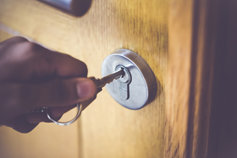
Are you one of the majority of families that still leave pills on countertops or in medicine cabinets? A new study from Johns Hopkins reveals that most parents still haven’t received the message that pills need to be locked up to keep them out of the wrong hands.
This new survey asked 681 adults who had been prescribed painkillers about the ways they stored pills in the home. All those surveyed had children in the home under 17 years of age. Seventy percent of these parents said that they leave pills out in the open, easily accessible.
This survey provides a vital look at the state of pill availability to vulnerable youth. Very small children see their parents taking pills and might think they are candy. Teens hear or read about the “awesome high” available from opioids like Vicodin or OxyContin and they get curious. The pills are right there—in the kitchen or mom’s purse or maybe at grandma’s bedside. Since the bottle is almost full, they figure mom or dad won’t miss five or six. So they take them to a party or use them with a couple of friends. It’s significant that 40% of high school seniors consider painkillers “fairly easy” or “very easy” to get.
How Many Children are Exposed to These Medications?
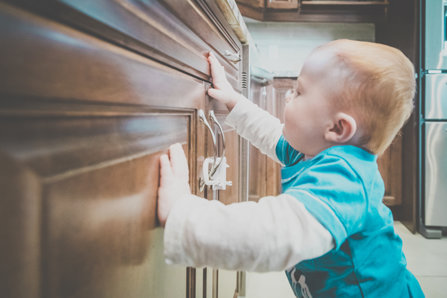
According to Safe Kids Worldwide, 160 children are rushed to a hospital emergency room each day due to accidental medication overdoses. Another report notes that poison control centers received reports of more than 188,000 children who were accidentally exposed to just one type of drug—prescription opioids.
But those are accidental exposures. What about intentional exposure by older children? Is it possible to tell who might get into drugs or alcohol around the home and who won’t? Not necessarily.
In a study of 1000 youth who were followed for more than 25 years, the number who showed early conduct problems and then got into drug or alcohol use was the same as the number who showed no conduct problems and then did the same. ract
Many people who are drawn to drugs or who are addicted don’t show any obvious signs. They struggle to maintain an appearance of normalcy so they can continue their drug use or addiction. If a person does become addicted, it’s not that they want to keep using drugs. They keep their drug use a secret out of desperation.
To prevent this from happening in your home, let’s look at all the places your medications, alcohol or other abusable substances might be stored and what types of drugs need to be locked up.
What’s in the Medicine Cabinet?
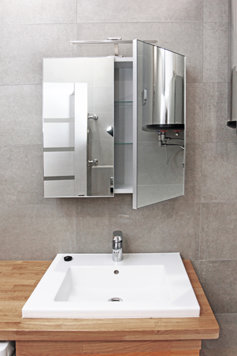
This is the easiest place to get pills and the first place a desperate person looks. Maybe your son, daughter or another family member would never, ever experiment with (or become addicted to) pills. They’ve got friends that may be susceptible. Those friends may visit your home. You have repairmen in your home from time to time who may need to use your bathroom. They may be struggling with drug use.
According to the National Institute of Drug Abuse, here are the most commonly misused prescription drugs.
Opioids
- Codeine, often found in cough medications
- Hydrocodone (Vicodin, Lortab or other branded names)
- Hydromorphone (Dilaudid)
- Meperidine (Demerol)
- Morphine (MSContin)
- Oxymorphone (Opana)
A report from the American Academy of Pediatrics found that the #1 type of drug sending small children to the hospital was opioid painkillers. In the #2 spot were the benzodiazepines we’ll look at in a moment.
Stimulants
- Amphetamine (Adderall)
- Methylphenidate (Ritalin, Concerta)
Central Nervous System Depressants
Drugs in this category are often prescribed to help people sleep or to reduce their anxiety.
- Barbiturates (Nembutal, Seconal and others)
- Benzodiazepines (Xanax, Valium, Ativan, Librium, Halcion)
- Sleep medications (Lunesta, Sonata)
Cough Medicines
Cough medicines that contain dextromethorphan are very commonly abused, especially by younger people who may have an easier time getting their hands on these than pills. There are dozens of brands of cough medicine that can get a person high. You will normally see a “DM” in their name, indicating that the formula contains dextromethorphan.
Loperamide
Loperamide is an ingredient in over-the-counter medications that treat diarrhea. It can be found in the branded product Immodium. It creates euphoria when taken in large doses and can cause overdoses.
The smartest thing you can do is lock up every prescription you have, whether it is on this list or not. I talked to a mother one time whose son had become addicted to painkillers. He’d been a competitive gymnast but then was injured and needed surgery. That surgery ended his involvement in gymnastics. When he had healed from his surgery, he didn’t need the extra pills anymore but they were still sitting around the house.
His pain and loss from the ending of his gymnastic hopes sent him back to the pills. It was quite a while before his parents found out that he had been misusing the pills and by then, he was dependent on the drugs. They never suspected that one of their kids would ever indulge in drugs. And in normal circumstances, that might have been the case. But then an abnormal circumstance came along.
A young person may not know the difference between a drug that might get them high or a blood pressure medicine that could cause a slow heart rate, coma or even death in a person who doesn’t need that medication.
Better Than a Medicine Cabinet: Locking Cases
There are all kinds of locking medicine cabinets and storage boxes. It’s a very smart move to make a small investment in one of these items so you have a place to store medications when they arrive in the home.
Medicine cabinets are available online and at many home improvement stores. Locking medicine cases are available online, in discount and regular department stores and pharmacies.
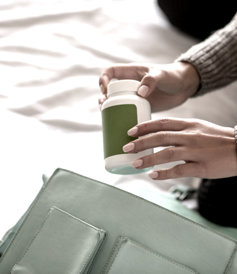
For Purses and Briefcases: Locking Pill Bottles
If a person thinks there are drugs in your home and they are desperate, they won’t hesitate to check out your purse or briefcase for pill bottles. If you really want to keep all your drugs from being misused, you’ll have to lock up medications you’re keeping readily available for use, even if it makes it a little harder to get to your pills when it’s time to take them.
It is possible to purchase pill bottles with combination locks. With one model, there are four gray rings at the top of the bottle. They are turned until the numbers on the rings line up to a certain combination. Someone could steal the entire bottle but they wouldn’t be able to filch pills without you knowing. This is a possible solution that still keeps your medications easily accessible.
The Bedside Table
When a person is deep down their slide into addiction, they are driven by their need to prevent withdrawal sickness. Anyone who has already been through opioid withdrawal wants to prevent it at nearly any cost.
What this means is that a person addicted to painkillers, heroin or similar drugs will in many cases begin to do things they never would have done before their addictions. This is one reason families are caught off guard so badly when they finally find out their loved one is addicted. They never would have believed that their loved one would steal from their family members, embezzle money from a business, or tell flagrant lies to get cash. But they would.
One woman told me that she would go to the bedside of her grandmother who was dying and take a few pills each time from the bottles by the bedside table. When her grandmother finally died, she hurried to the home so she could get her hands on whatever pills were available. This wasn’t something she would have ever done unless she had been desperate.
Securing these pills is challenging if the ailing person is not capable of managing a locking device. It might be necessary to only leave a single day’s medications out for the patient. That way, it will immediately be obvious if anyone has been stealing pills.
Alcohol
Let's not overlook the availability of alcohol. Of course, the storage of alcohol is a completely different situation. Most homes have some alcohol in them, somewhere, even if the bottles are gathering dust in a high cabinet. If you’re to keep your alcohol from being consumed by youth, you’re going to have to think like a teen who wants to drink without getting caught.
Lock the Liquor Cabinet
It’s not hard to put a padlock on a kitchen cabinet. I remember talking to one young person who would refill her parents’ liquor bottles with water after drinking from them with her siblings. She probably knew which bottles were seldom touched (and looked like water).
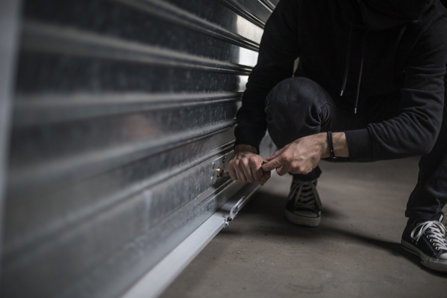
Lock the Refrigerator in Garage or on the Patio
A young man once told me that he knew which houses in his neighborhood had refrigerators with alcohol in them sitting in their garages. He would sneak into these garages and steal the alcohol that got him started on the road to addiction. He finally needed rehab to free him from this habit.
Stealing a few beers may not seem like a big deal and really, it’s not. It’s just that some people are susceptible to addiction and it doesn’t take much for them to get that start. Add a combination lock to that garage or patio fridge and you’ll know that you did what you could to prevent that start.
Sources:
- https://www.baltimoresun.com/health/bs-hs-drug-storage-20170219-story.html
- www.monitoringthefuture.org//pubs/monographs/mtf-overview2016.pdf
- https://abcnews.go.com/Health/accidental-overdoses-send-160-kids-er-day-report/story?id=37707531
- https://www.ncbi.nlm.nih.gov/pmc/articles/PMC7017799/
- https://pediatrics.aappublications.org/content/139/4/e20163382
- https://www.ncbi.nlm.nih.gov/pmc/articles/PMC3664402/
- https://www.drugabuse.gov/drug-topics/commonly-used-drugs-charts#prescription-opioids
- https://www.drugabuse.gov/drug-topics/commonly-used-drugs-charts#prescription-stimulants
- https://www.drugabuse.gov/drug-topics/commonly-used-drugs-charts#central-nervous-system-depressants
- https://www.narconon.org/drug-abuse/barbiturate-signs-symptoms.html
- https://www.drugabuse.gov/drug-topics/commonly-used-drugs-charts#Dextromethorphan
- https://www.narconon.org/drug-abuse/cough-medicine/
- https://www.narconon.org/drug-abuse/signs-symptoms-prescription-drug-use.html
- https://www.drugabuse.gov/publications/drugfacts/over-counter-medicines
- https://ercare24.com/what-happens-when-children-swallow-blood-pressure-medication/
Reviewed by Claire Pinelli, OCAADC, CCS. LADC, RAS, MCAP, LCDC


 ®
®